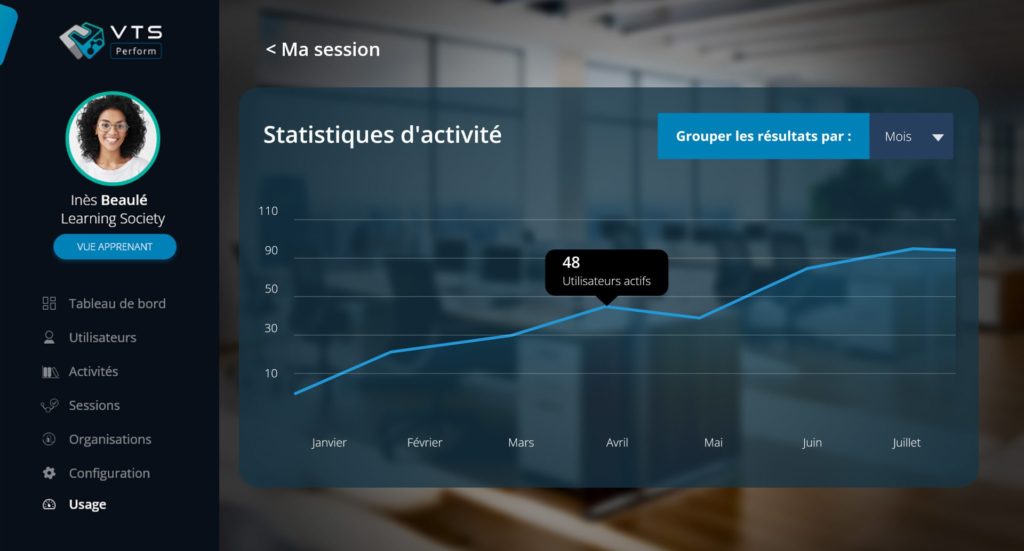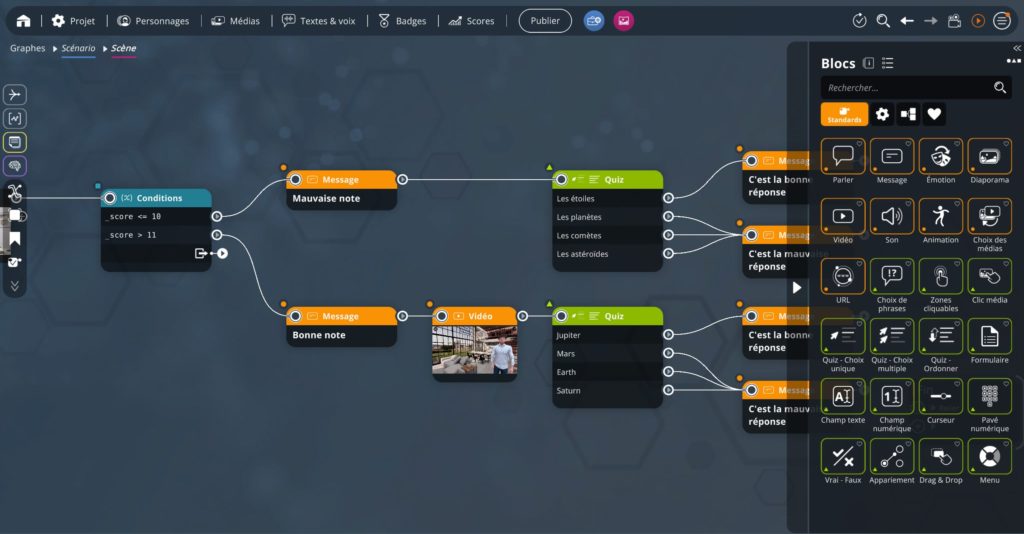80% of learners abandon an e-learning course before completing it. This phenomenon, known as “learning dropout”, represents a major challenge for education and training, with significant consequences for learners, organizations and the image of e-learning. (source : teachonmars).
The key to maximizing engagement and avoiding drop-out is to tailor training levels to the needs and skills of each individual participant. A personalized approach to learning is not only beneficial for maintaining learners’ interest, it also ensures effective and relevant progression for each individual.
With this in mind, it is essential to set up initial assessments to determine individual prior knowledge and learning objectives. Based on this information, training content can be adjusted to meet the specific needs of each participant, whether this involves filling gaps or developing advanced skills.
Branched pedagogical modules to Foster learner engagement
With VTS Editor, it is possible to design training modules with branches, modulating themselves according to the learner’s previous answers, choices and results. Should the learner encounter difficulties, the branching system enables the training level to be adjusted according to his or her performance. This preventive approach avoids any risk of the learner dropping out. Furthermore, if the course proves too simple for the learner, to the point of boredom and disengagement, you can adapt the difficulty of the scenario. This method ensures a tailor-made learning experience, preventing premature drop-outs and promoting constant progress tailored to each individual.
“The transition to VTS Editor has transformed our approach to training,” testifies Sarah Lépine, HR Director at Innovatech. Previously faced with low retention rates, VTS Editor has enabled us to individualize learning, resulting in a 45% increase in learner engagement.“

VTS Perform allows you to monitor learner engagement in detail
As a designer, VTS Editor offers you an intuitive interface for building your adaptive models with ease. Simply use the power of variables to navigate between the different branches of your scenario. Depending on the score obtained, the training will take another turn.

branching graph in VTS Editor
Adaptive training is no longer a competitive advantage, it’s a necessity
With VTS Editor, this approach becomes accessible to any instructional designer or training manager wishing to make a real difference in the world of education.










